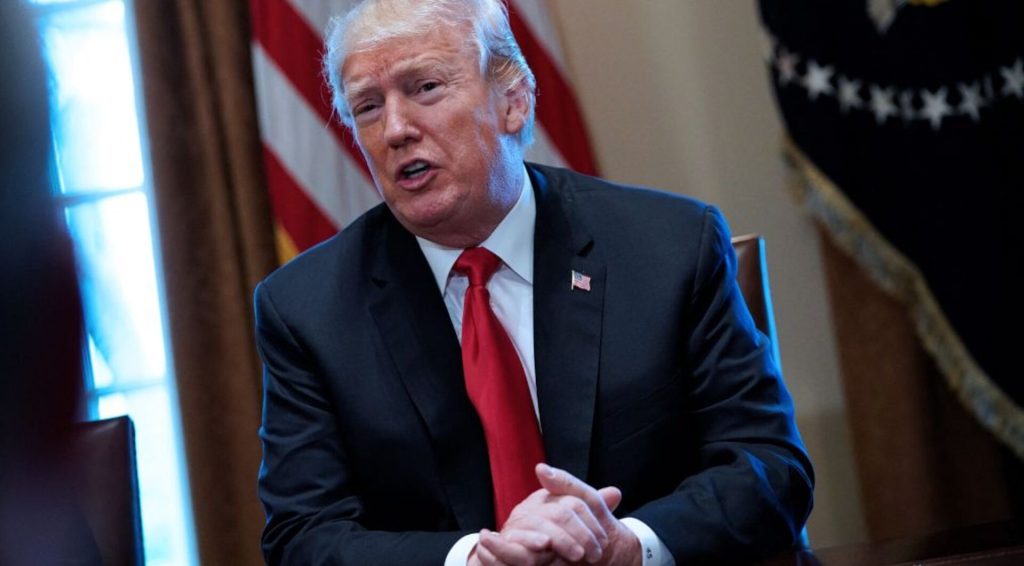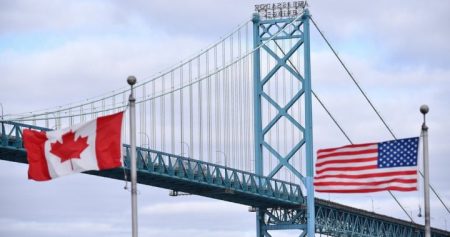US Trade Taxes on Canada and Mexico: A Temporary Reprieve
The United States has announced a 30-day pause on its tariffs on goods imported from Canada and Mexico, a decision that has, for now, averted a potentially devastating trade war among North America’s allies. This temporary reprieve comes after months of escalating tensions over trade policies, particularly under the presidency of Donald Trump, who has been vocal about his belief that the U.S. has been unfairly treated in international trade deals. The decision to pause the tariffs has been greeted with cautious optimism by both Canadian and Mexican officials, who had been bracing for the economic impact of these levies. However, the broader picture of U.S. trade policy remains uncertain, with the ongoing trade disputes with China and the rhetorical emphasis on tariffs as a tool for addressing perceived trade imbalances continuing to dominate the headlines.
The Broader Context: US-China Trade Tensions
While the tariffs on Canada and Mexico have been paused, the U.S. has moved forward with implementing tariffs on Chinese goods. This has led to a predictable response from Beijing, which has imposed its own retaliatory tariffs on U.S. products. The Chinese government has accused the U.S. of unilateralism and has filed a formal complaint with the World Trade Organization (WTO), the international body responsible for overseeing global trade rules. The U.S.-China trade dispute has been a major focal point in recent years, with both countries imposing escalating tariffs on each other’s goods. President Trump has framed these tariffs as a necessary measure to address what he sees as unfair trade practices by China, including intellectual property theft and state-subsidized industries. However, the impact of these tariffs is being felt on both sides, with U.S. consumers and businesses also facing higher costs for imported goods.
The Rationale Behind Tariffs: A Debate
The question of whether tariffs are an effective tool for addressing trade imbalances is a contentious one. President Trump has been a vocal advocate for tariffs, arguing that they are a necessary measure to protect American industries and workers from what he describes as unfair competition from other countries. He has repeatedly asserted that the U.S. has been “ripped off” by its trading partners, and that tariffs are a way to level the playing field. However, critics argue that tariffs are a blunt instrument that can have unintended consequences, such as higher prices for consumers, disruptions to supply chains, and potential retaliation from other countries. Additionally, there is a broader debate about whether tariffs are an effective way to address the underlying issues in international trade, or whether they simply serve as a political tool to satisfy domestic constituencies.
Expert Perspectives: Insights from Trade and Finance Specialists
To better understand the implications of U.S. trade policy, it’s useful to turn to the insights of experts in the field. Dmitry Grozoubinski, Director of ExplainTrade, a consultancy specializing in trade policy and negotiations, offers a nuanced view of the current trade landscape. He emphasizes the complexity of modern trade relationships, which involve not just goods but also services, intellectual property, and investment flows. According to Grozoubinski, while tariffs may provide short-term protection for certain industries, they can also lead to long-term distortions in the economy, as companies may be incentivized to lobby for protections rather than investing in innovation and competitiveness. He also highlights the potential impact on small and medium-sized enterprises (SMEs), which may lack the resources to navigate the complexities of retaliatory tariffs and shifting trade rules.
Greg Swenson, a founding partner of the investment banking firm Brigg Macadam, brings a financial perspective to the table. He notes that the uncertainty created by ongoing trade disputes can have a chilling effect on investment, as businesses may be reluctant to make long-term commitments in an environment where trade rules are subject to sudden changes. Swenson also points out that the impact of tariffs is not felt equally across all industries or regions. Some sectors, such as agriculture and manufacturing, may be particularly vulnerable to retaliatory measures, while others may find ways to adapt or even benefit from the shifting trade landscape. He emphasizes the importance of considering the broader economic context, including currency fluctuations and consumer sentiment, when evaluating the impact of trade policies.
Gavin Fridell, a professor of Political Science and Global Development Studies at Saint Mary’s University in Canada, provides a critical perspective on the political and social dimensions of trade policy. He argues that the current trade tensions reflect deeper structural issues in the global economy, including rising inequality and the declining influence of multilateral institutions like the WTO. Fridell suggests that the U.S. emphasis on unilateral action, particularly under the Trump administration, has undermined the stability of the global trading system and created opportunities for other countries, such as China, to assert their influence. He also highlights the potential social costs of trade disputes, particularly for vulnerable populations who may be hardest hit by higher prices for basic goods.
The Way Forward: Balancing Interests in a Complex World
As the U.S. continues to navigate its trade relationships with Canada, Mexico, and China, the question of how to balance competing interests remains a challenging one. On one hand, there is a need to address legitimate concerns about unfair trade practices and ensure that U.S. industries and workers are not unfairly disadvantaged. On the other hand, there is a risk that over-reliance on tariffs could lead to unintended consequences, such as higher prices for consumers, disruptions to supply chains, and damage to international relationships. The temporary pause on tariffs with Canada and Mexico offers a window of opportunity for further negotiations and a more constructive approach to trade policy. However, the broader tensions with China and the underlying structural issues in the global economy suggest that this will be an ongoing challenge for policymakers in the years to come.
In conclusion, the current state of U.S. trade policy reflects a complex interplay of economic, political, and social factors. While tariffs may provide a short-term solution to certain trade imbalances, they are not without their risks and challenges. As the U.S. seeks to navigate its trade relationships with key partners like Canada, Mexico, and China, it will be important to consider the insights of experts in trade, finance, and political science, and to work towards a more balanced and sustainable approach to international trade.












